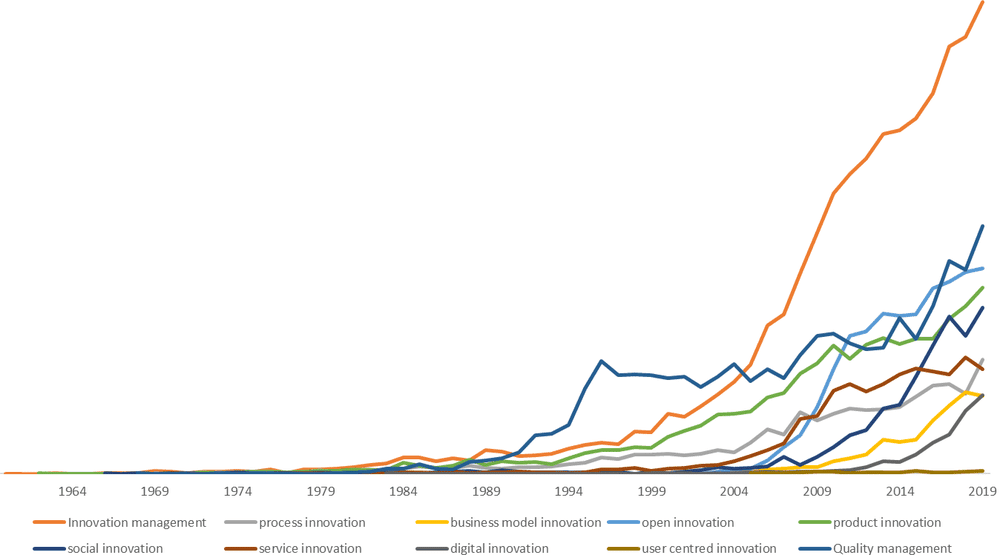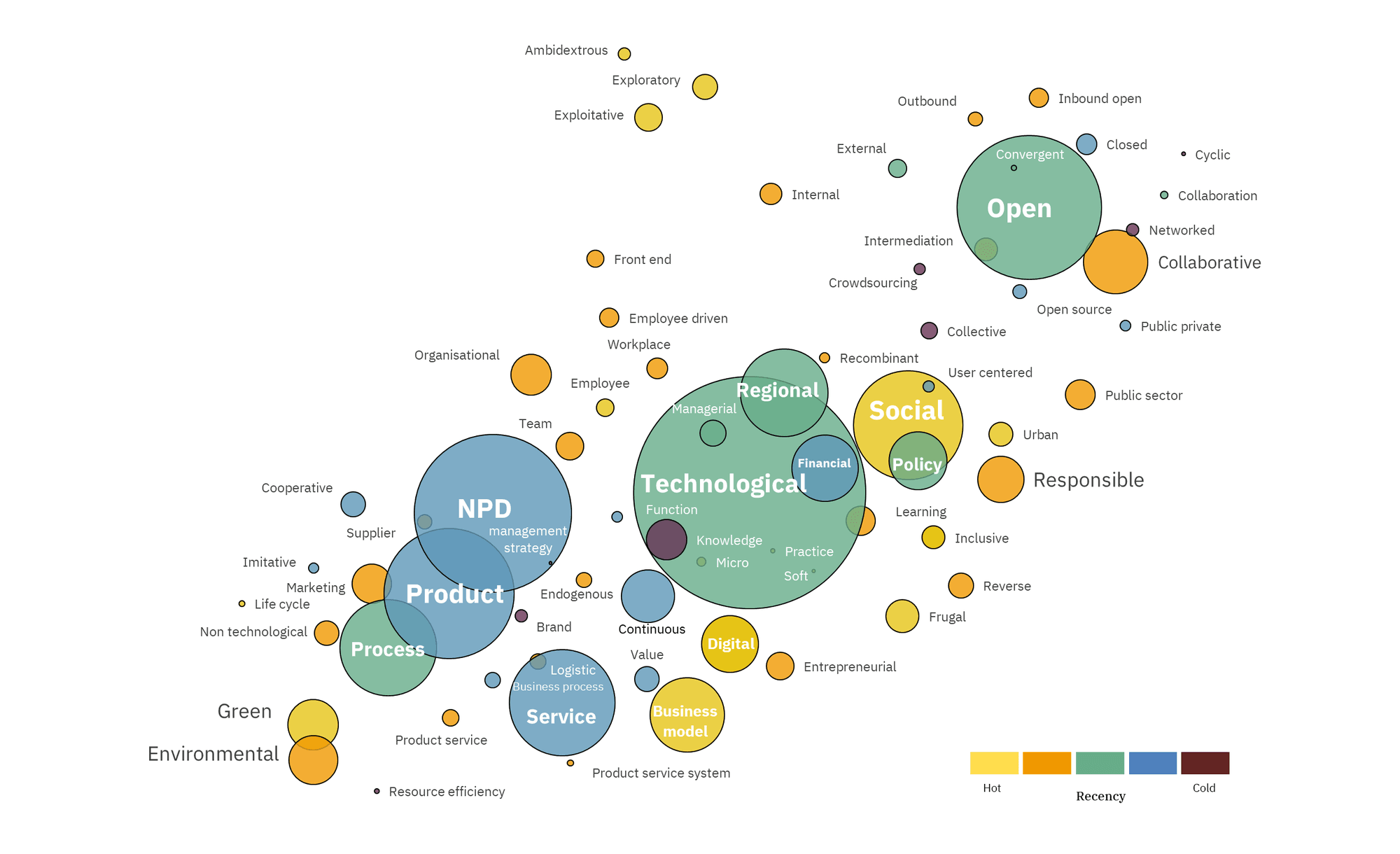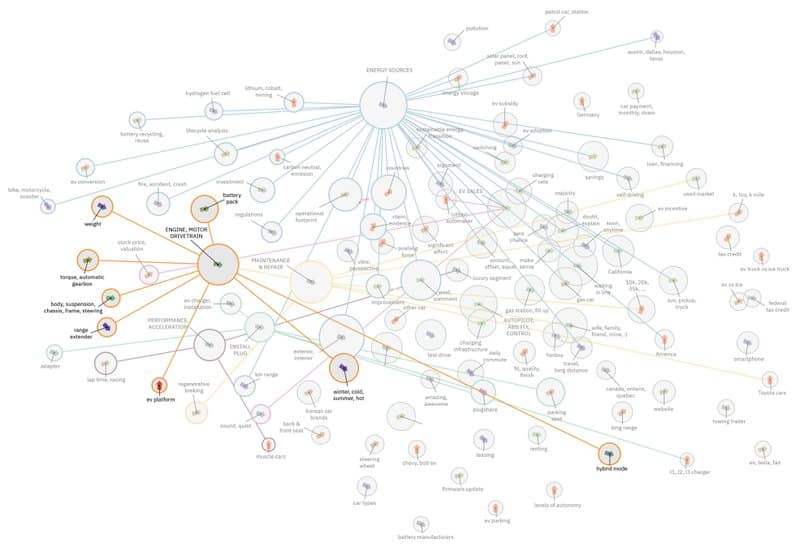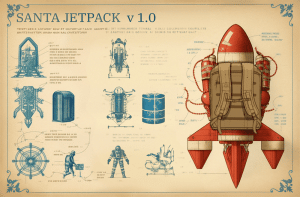Innovation unveiled – Part I
Innovation is certainly not the easiest of processes in an organization. Different types of innovation have been tried and studied. Over the past decades, the do’s and don’ts of innovation management have been scrutinized in academic research. This resulted in a few tens of thousands of papers and a wide variety of types of innovation.
To shed light on all this, Creax brings a consolidated analysis of these insights, mixed with our expertise as practitioners in a series of articles on contemporary and challenging aspects of innovation management. This is the first in a series of two-monthly blogs about innovation management: Bringing Clarification in the Complexity of Innovation.
The different types of innovation
Innovation has evolved strongly over the years: it has transformed from a rather ad hoc incremental, company-internal matter (adjusting products, processes, services, and technology) into a cross-organizational and cross-industry/market practice.
As an expert in technological innovation and working with our customers for more than 20 years, Creax has witnessed and observed this from a very close distance. And yes, innovation has become so versatile and complex that organizations have no choice but to have a well-conceived innovation strategy and culture tied to it. Ideally, these are supported by external, in-depth expertise.
But what does this mean? And how does it impact you as an innovation director, R&D manager, or CEO of your company? Creax commits to helping you to bring lucidity to the landscape of innovation management.
Innovation management – AI-based consolidation of over 54,000 papers
Innovation, but also the methodologies and the requirements to manage innovation effectively and boost the success rate have been discussed intensively in academic literature over the years. The research of this vast amount of papers, therefore, gives a unique view of the dynamics and trends in this landscape.
The Data
To date, more than 54,000 academic papers address the broad topic of ‘innovation’, while the more specific topic of ‘innovation management’ accounted for 15,000 papers.
While innovation has been a regular topic of academic papers since the 1940s, it really took off at the turn of the century. It becomes clear that innovation management was pretty much an uncharted territory 2 decades ago.

The growing strategic relevance of innovation has also caused a shift in many companies’ priorities. Whereas in the 1980s the focus was mainly on project management and in the 1990s on quality management (the blue curve that peaks around the ’80s), the importance of innovation management has only grown exponentially since the turn of the century. Much more than quality – which became merely a primary benchmark – innovation has become the differentiator for organizations nowadays.
The research methodology
A huge amount of papers is behind these numbers and it is impossible to read all of them. That is why Creax has unleashed its in-house AI platform for context analysis Mynd, to discover unbiased and quantified insights on the content.
In essence, Mynd distills a hierarchical topic map from the context of large textual datasets. Creax heavily relies on Mynd for its core activities to discover technologies, applications, materials, needs, etc., and to quantify trends and correlations therein.
Moreover, the unsupervised nature of the topicing algorithm allows the exploration of unknown domains without prior knowledge, leading the researchers to those strategic insights, no matter how emerging they are.
Find out more about the Science behind this study? More info at the end of this blog
The results: 70 types of innovation
The first result of this study is a coherent and enlightening cluster map of the “types of innovation”, as discovered by Mynd. Each bubble in this map represents a type of innovation.
Reading the graph
Whereas the horizontal and the vertical axis have no meaning, the placement of the bubbles shows the related activity, recency, and correlation.
- Distance. The distance between the bubbles is a measure of their correlations. Types of innovation that are strongly related thus appear closer than those that have very little in common.
- Size. The size of the innovation types relates to the activity: the more people publish about something, the bigger the bubble.
- Color. The color scale represents recency. From recent in yellow-orange hues over green and blue, to finally purple for established and older themes.
As such, new emerging types of innovation appear mostly as small yellow-orange bubbles. Well-established ones are shown in large green-blue circles. Smaller blue-purple types of innovation represent old themes that have been abandoned in the past. Either because they are well mastered or dead tracks.

What can we learn from this plot?
Although most of us can easily think of a handful of types of innovations, academics distinguish between at least 70 different types of innovation. Innovation is about much more than just developing a new product or service.
Innovation is a multifaceted discipline, with numerous aspects and specialties that often interact or overlap with each other. It has to do with ideation, technology, people, organization, customer onboarding, strategy, transformation, and many more.
– Technological innovation
As you can tell from its size and central position, technological innovation still appears to be the cornerstone of innovation. Indeed, most innovations do have a technological component to them.
– Classic types of innovation
Closely linked to technological innovation (in the left corner) you’ll find the classic and most established types of innovation in intimate relation to one another: product innovation, service innovation, and process innovation.
Surrounding these “classics”, we see satellites that go hand in hand with marketing, brand innovation, supplier innovation, logistics innovation, etc. However, if you pay attention to the recency, you can see that the most contemporary focal points in relation to product, process and service innovation are green innovation, business model innovation, and digital innovation.
– Digital business models and sustainability
This should come as no surprise given the global shift towards eco-friendliness and the rather disruptive shake-up by digital business models like Uber, Airbnb, Amazon, etc. Another example would be the extensive digitalization in the business process (e.g. farm 4.0, drug discovery,…). In general, this supercluster refers to which aspect of your business you’re innovating.
– People: between technology and product
A swarm of types of innovation focused on people links the classic product-process-service innovation to technology. This group of innovation types addresses who, how, and in which governance structure innovation can be tackled.
Although still small, but rapidly growing, the people and organizational aspects in innovation pose a significant challenge. This is exemplified by the emergence of terms like team, people, organizational, and workplace innovation.
Although this all refers to organizing and setting a culture in the corporate atmosphere, there’s also a recent branch of innovation management related to including external groups, of which social and responsible innovation are the dominating types.
– Innovation ecosystems
The right corner of the cluster map groups open innovation and its different variations and derivatives to set up systematic and large-scale innovation ecosystems. The large bubble size indicates that quite some ink has already gone to the subject. But the green recency metric also shows that open innovation, as such, is no longer the hottest topic. Moreover, the fact that it takes such an isolated position in the landscape coincides with our experience that open innovation has not been widely implemented – so far.
– Ambidextrous innovation
The last cluster worth mentioning, are the emerging themes of ambidextrous, exploitative, and explorative innovation (top). These hot themes relate to the strategic aspect of innovation and will be the subject of our next post.
– Conclusion
On one hand, this landscape shows that you can approach innovation from many angles (about 70 as we speak). As a matter of fact, the growing maturity of modern companies in the discipline of innovation exercises stipulates that applying a multi-angle approach is primordial to remain competitive and differentiating.
On the other hand, the various types of innovation in essence coalesce with the core competencies of different departments. Open innovation rather belongs to the knowledge management department, technological innovation to R&D, process innovation to engineering, while business model innovation relates more to finance.
Successful and effective innovation thus urges the capability of corporations to tear down internal silos and facilitate a cross-organizational approach to innovation. Last but not least, given the complexity of the topic, external, specialized innovation expertise is needed more than ever.
What’s next and what’s in it for you?
We are eager to meet the challenge of unveiling the complexity of innovation. In the next in-depth articles, we will share with you the insights on innovation types and trends, using the above cluster map as a vehicle.
We hope that these concrete findings and recommendations will guide you in the concrete management of innovation in your organization.
Get involved
We want to involve you and as such build an interactive innovation community.
- Would you like to see a particular innovation topic addressed?
- Do you have questions about the innovation challenges you face?
- Do you want to clear up or align your strategic innovation goals with your business strategy?
Let us know and we will address that in a future article. Feedback on published articles is more than welcome. It will only better illustrate how much innovation is alive today.
The Science behind the study
Mynd is an innovative AI text mining platform that analyses large sets of structured and unstructured text documents for their content. It allows gaining concrete and quantified insights on the variety of discussed themes and their interplay.
Auto-topicing
Although most classical text mining platforms work with a user-defined thesaurus, Mynd applies unsupervised methods. Without predefined terminology, Mynd identifies and groups discussed topics according to importance and similarity. This model is called an auto-topicing model.

A layered hierarchy in the topic model allows exploring the content from a helicopter view to highly detailed insights. The visual outcome of the “helicopter view level” is a dynamic field map, providing a clear picture of large topics (bubbles), trends (arrows), and underlying associations (proximity and connections).
Note that in the study on innovation management, the arrows are replaced by colors to better distinguish between hot and cold topics.

The unsupervised approach allows the researcher to engage in a discovery process, revealing both the knowns and unknowns of a large domain. Within the context of innovation, this ‘storyboard’ very often provides inspiration to cross-industry solutions that can be translated to the context of the innovation challenge at hand.
Entry points for further research
Interesting fields are selected from this view for further deep-dive research, down the hierarchy of the topic model. However, each question is framed in a different context. The platform, therefore, allows the researcher aiming for deeper research, to select or prune topics for further analysis. In other words, the platform is not a black box – the researcher can define the types of information for a specific question.
Research efficiency
Quantitative insights are then obtained by correlating the classified information and underlying metadata via, for example, heatmaps. Smart built-in metrics allow ranging and intelligent sorting to assist the researcher in revealing the necessary insights.
In this way, Mynd ensures that researchers carry out investigations as accurately and efficiently as possible while still drawing on the insights from vast amounts of research.
Interested in discovering the potential of Mynd for your technological innovation challenge? Talk to us
Download the paper

Related blogs

Camping case
Discover how Creax can help identify new opportunities and innovate products by utilizing a human-centered design approach in this camping case study.

Embrace the future
Technological breakthroughs and evolving new industries make an exciting prospect, with new challenges & possibilities. But it’s no easy feat keeping up!

Can data (only) lead your company into the next decade?
Creax presents a new data-driven methodology for future thinking. The framework brings confidence to take strategic decisions, leads to opportunities for your business and stimulates the creative innovation process.
